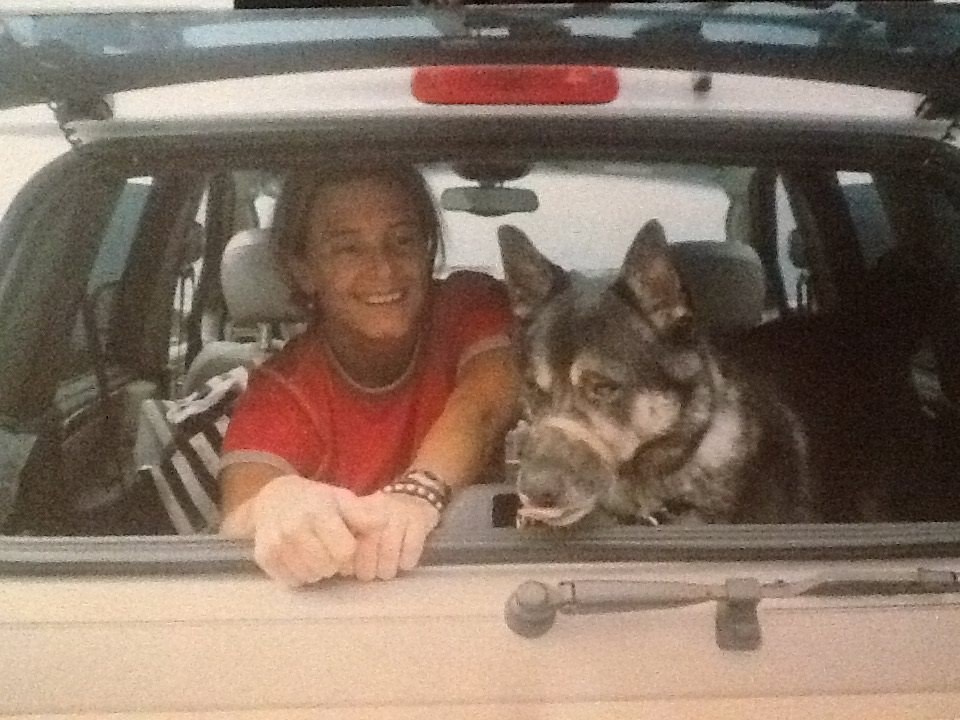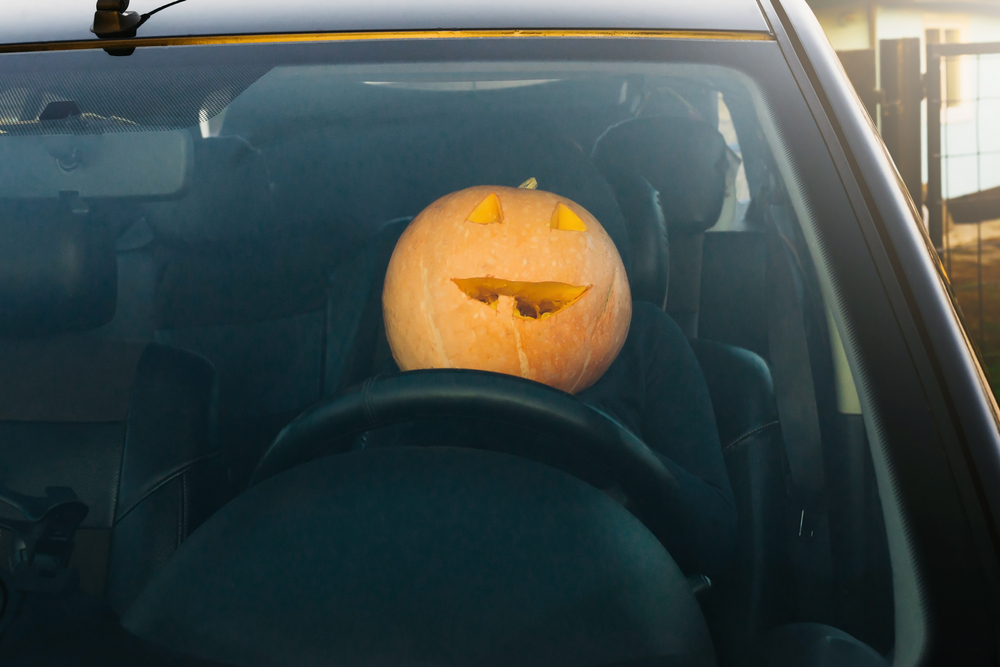We are proud to present this guide to summer road safety.
According to the National Highway Traffic Safety Administration, the summer holidays are the most dangerous days to drive. July Fourth, Labor Day and Memorial Day each surpass New Year’s Eve and Thanksgiving as the holidays with the most fatalities.
There are many factors that lead to the dangers, including drunk driving and the increase in traffic volume; however one factor that many drivers may not consider is that weather conditions can create road hazards as the temperature heats up. Here is the comprehensive list of hazards and solutions to keep drivers safe this summer:
Safe Summer Driving Manual
With Memorial Day just a memory, summer vacation beckons in the near distance. We can practically smell the heat, the saltiness of the ocean, and good times. You’ve worked hard all year and you’re itching for time off. In the haste to get away, however, it’s important not to overlook the hazards that come with summer driving. Take some time to read through these tips—they may just save your summer—and your life.
Summer driving means high temperatures, wall-to-wall traffic, and heavily traveled roads. Such conditions not only stress your car, but can stress the driver, too. With some advance preparation, you can minimize the chances for a breakdown. Having planned and prepped for all eventualities (well, most of them) you’ll feel calm and ready to cope, no matter what.
Keys
Do you know where your keys are? It can be hard to keep track of your keys and keep them dry while at the beach. During the year, we have pockets. Not so when you’re in a swimsuit or trunks. Keys can be swallowed by sand and salt water can damage the circuits so that a transponder key becomes a worthless piece of metal and plastic. Think about a safe, dry place where you can keep your keys safe during a jaunt on the beach and this is important: remember where that is. It’s also worth your while to read the manual that comes with your car detailing alternate methods of unlocking your car door in case of remote key failure. There’s almost always another way and trust us, you’ll want to know about it if you ever experience a key fail.
Tires
Check your tires because stuff happens. Hot temperatures tend to aggravate minor damage to rubber tires. If your tires are low on air, there will be added friction and heat as you drive, stressing the rubber even further. Weak spots on your tires may be overcome leading to punctures and blow-outs. To prevent such an occurrence, give your tires a thorough going over before your road trip. Look for cracks and check for sufficient air inflation. You may want to increase the air pressure to compensate for any extra weight you may be carrying on your road trip. If your tires seem iffy, replace them. And make sure you have a spare!
Cooling System
Keep your cool. Summer is a cooling system nightmare. High temperatures tend to aggravate any minor cooling system issues which can lead to overheating and expensive repairs. Check the level of coolant in your car on a regular basis. Watch for wet or white stains on coolant hoses which can indicate a leak. Last but not least, check to make sure your car fan is in good working order. To do this, run your car for a bit to warm it up and then leave your engine idle for around 10 minutes. You should be able to hear your fan kick in. The fan cools your engine when you’re crawling at a snail’s pace or stuck in holiday traffic.
Reduce Drag to Conserve Fuel
Wasting fuel is a drag. Carrying luggage on your roof can cause drag (resistance) and burn up fuel. You can reduce this effect by using a roof box or by tying things down on a roof rack and wrapping them tightly in plastic sheeting. Keep the load as low as possible. When you get where you’re going, remove your roof rack or box to cut back on drag during day trips. Open windows can also cause drag when you’re traveling the highways, not so much while driving in town. When you’re out on the road, air conditioning is a better bet. But if you’re just running errands in town, open windows are fine.
Driving Fatigue
Road weary. You’d think that just sitting and turning a steering wheel wouldn’t be so tiring, but we all know that driving is a tiring enterprise. It may be about the hypnotic quality of the scenery whooshing by, the feeling of the motor, or the need to be constantly focused, but whatever causes it, road fatigue is a real phenomenon. Combat the fatigue by taking a 20-minute break for journeys lasting 3 hours or more, or for longer trips, take a break every couple of hours. It’s better to take several 20-minute breaks than one long stop. Don’t eat heavy meals or drink alcohol before a road trip. If all else fails, gulp down a couple of cups of good strong coffee. The caffeine should get you through.
Hay Fever

Nothing to sneeze at. Summer allergies, for instance hay fever, can create hazardous driving conditions. For one thing, a sneeze of 70 mph can cause you to lose your vision for up to 110 yards. For another thing, allergy medications can cause drowsiness and put you at risk for poor driving judgment or worse—falling asleep on the road.
If you have severe allergies, it’s best to get someone else to drive. But if that’s not possible, take some precautions. Have your doctor try you out on different allergy medications until you find one that doesn’t make you drowsy. Use the air conditioner in your car rather than open windows or use the air vents. The idea is to lessen your exposure to pollen. Regularly vacuum your car and wash car mats to remove dust and pollen. Wear sunglasses to reduce the effect of glare on already bleary eyes. Keep tissues at the ready. Feel a sneeze coming on? Slow down and allow your car to drop back in traffic a bit.
Glare

In broad daylight. Anything that impairs vision poses a driving hazard and that includes bright sunlight that shines directly into the driver’s eyes. The dangers of glare are especially keen in the late afternoon and very early morning and have caused many a car accident. Keep a pair of sunglasses at the ready making sure the lenses are clean and contain no scratches. Ensure your windshield is spotless, since smears on the glass, whether inside or outside your car, can catch and amplify sunlight.
Alcohol
Don’t drink and drive. According to the National Highway Traffic Safety Administration (NHTSA), close to 11,000 drivers and passengers die in alcohol-related crashes each year. That comes to one death every 50 minutes. It’s fine to toss down a few drinks at a party, but not if you’re planning to drive home. Make sure you have a designated driver to get you home safely. This is the person who agrees to avoid drinking alcohol for the evening so the rest of you can get smashed and then arrive home unscathed. Let your designated driver do the driving. No volunteers for the job? Call a cab.
Navigating Storms

Stormy weather. If you must drive when a storm is expected, stay tuned to your car radio to keep apprised of the storm’s development. In rainy weather, use your low beams and drive slower than usual. Brake earlier to leave more distance between your car and the car ahead. If the rain becomes very heavy, pull over onto the shoulder of the road, making sure to choose a section of the road with no trees that could become uprooted and fall onto your car. Use your emergency flashing lights. In case of lightning, avoid touching conducting (metal) surfaces both in and outside of your car.
Cyclists And Pedestrians
Keep your distance. It may not be so important when you’re out on the highway, but when driving in town, keep your eyes peeled for motorcyclists, bicyclists, and pedestrians. The NHTSA says that a pedestrian is injured in a car accident every 8 minutes and killed in a car crash every 113 minutes. The most danger-laden period is in the days surrounding Memorial Day and the Fourth of July, when traffic increases. Keep everyone safe by pulling slowly out of side streets, while verifying that the area is clear of all foot and cyclist traffic. Also, leave lots of space between you and cyclists or pedestrians when yielding. Last but not least, take care when opening car doors. Slow and careful equals safety for all.
Loose Objects
Batten down the hatches. It’s valid to need camping or scuba diving gear and there’s always one more thing you need to bring on a road trip. But loose objects pose a driving hazard. Any sudden jolt can send bottles, sippy cups, and CD’s flying. A single half-pound object, moving at 60 mph can hit with the impact of a 30-pound object. It’s best to keep things tightly contained, including you and your passengers. Buckle up those seat belts!
Tailgating
Keep your distance. Not sure you’re leaving enough space between you and the car ahead? Apply the two-second rule. Choose a marker up ahead, such as a billboard or a rest stop sign and watch the car in front of you pass it by. Count, “One thousand and one, one thousand and two,” and see if you pass the marker before you say, “two.” If so, you’re not leaving sufficient distance between your car and others on the road.
Large Vehicles
Size counts. Trucks and tractor trailers should be responded to with caution (same goes for cars with boats hitched to them by trailers and RV’s). Their size impedes their response time. They are not only slower but have wider blind spots. They may not see you coming from behind. Caution is the rule.
Distractions
Tune ‘em out. Distracted driving is poor driving and can result in car crashes and loss of life. The main source of driving distraction is your mobile phone. Taking or making calls (even by Bluetooth) and worse yet, texting while driving, are proven dangers. In 2011, 23% of auto collisions (1.3 million car crashes) involved cell phone use.
Road Rage
It’s a two-way street. Sometimes it’s you getting angry in response to other drivers and sometimes you’re merely the focus of another driver’s rage. Then again, if another driver is blowing off steam and you’re the focus, you may find yourself getting angry, too. The main thing to remember is that road rage is a form of distracted driving, much like driving while drinking coffee, switching radio stations, or texting. Drive when you’re calm. If you’ve just had an argument, wait a few minutes and cool down before you drive, even if it means walking around the block a few times.
If another driver curses you out or acts inappropriately, don’t react. Keep your thoughts to yourself. Take deep breaths. Always drive responsibly so as not to anger other drivers. Don’t cut in front of other cars or honk inappropriately. Remember to always leave that two-second gap between your car and the car in front of you to avoid tailgating. Don’t toss things out the window, for instance, cigarette butts or candy wrappers. If someone is trying to cut in front of you, just let them. Slow down and wait for them to pull ahead if they’ve already inched into your lane. Avoid eye contact with angry drivers and don’t even think of making a rude gesture. You be the mature one that defuses the situation and keeps everyone safe and alive.
If forced to stop, stay inside your car and keep your motor running so you can take off when you have the chance. Call the cops from your mobile phone. Use your car horn if necessary. Turn on your hazard lights. Do you feel as though you’re being followed? Are you worried for your safety? Drive on within the speed limit to the closest police station or at least, pull into a busy mall parking lot—there’s safety in numbers. Memorize the license plate of the angry driver’s car and take note of the car’s make and color. Remember as much as you can about the driver. If you see someone else being victimized by a driver in a rage, don’t stop and try to help, it will just make the driver angrier. Instead, get to a safe place where you can stop and phone the police.







5 Responses